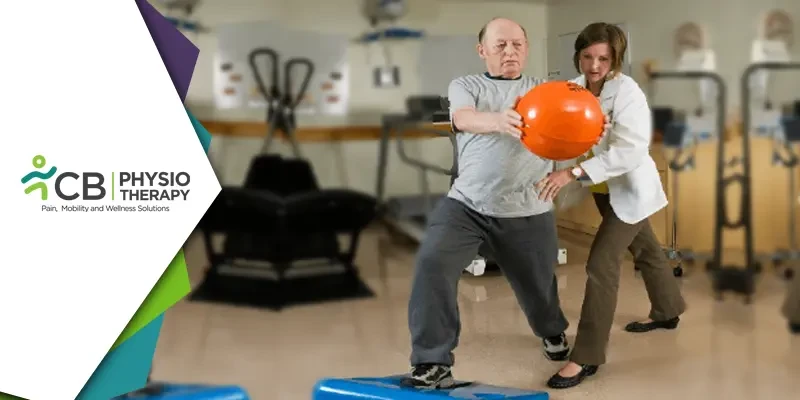April 11th is observed annually as Parkinson's Day to raise awareness about Parkinson's disease (PD) and its impact on individuals and communities worldwide. The theme for World Parkinson’s Day 2023 is#Take6forPD, it aims to raise awareness about the importance of exercise in PD management and encourage people with PD to engage in at least six hours of physical activity per week. Parkinson's Day is an opportunity to recognize the challenges faced by those living with PD, their families, and caregivers, and to renew our commitment to finding a cure for this debilitating disease. In this blog, we will through some light on Parkinson’s disease as well as on the theme for World Parkinson’s Day 2023, #Take6forPD.
Parkinson’s disease (PD) is a chronic and progressive movement disorder that affects millions of people worldwide. It is caused by the degeneration of dopamine-producing neurons in the brain, which leads to a variety of symptoms, including tremors, stiffness, and difficulty with balance and coordination.
While there is currently no cure for PD, there are many treatments available that can help manage symptoms and improve quality of life. One of these treatments is exercise, which has been shown to be beneficial for both physical and cognitive function in people with PD.
The campaign was launched in 2018 by the Davis Phinney Foundation, a non-profit organization dedicated to improving the lives of people with Parkinson’s. The name #Take6forPD comes from the recommendation that people with PD should aim to get at least six hours of exercise per week.
So Why is Exercise so Important for People with PD?
There are several reasons:
1. It can improve physical function: Exercise can help improve balance, coordination, flexibility, and strength, all of which can be affected by PD. By improving physical function, people with PD may be able to reduce their risk of falls and other injuries.
2. It can improve cognitive function: Exercise has been shown to improve cognitive function in people with PD, including attention, memory, and processing speed. This is important because cognitive impairment is a common non-motor symptom of PD.
3. It can improve mood: Exercise has been shown to improve mood and reduce anxiety and depression in people with PD. This is important because mood disorders are also common non-motor symptoms of PD.
4. It can improve quality of life: By improving physical and cognitive function, reducing falls and injuries, and improving mood, exercise can have a positive impact on the overall quality of life for people with PD.
So, What types of Exercise are recommended for People with PD?
There is no one-size-fits-all answer to this question, as the type and intensity of exercise will depend on a person’s individual needs and abilities. However, some types of exercise that may be beneficial for people with PD include:
1. Aerobic exercise: This includes activities such as walking, jogging, cycling, or swimming, and can help improve
cardiovascular fitness and overall physical function.
2. Strength training: This includes weightlifting or resistance band exercises, which can help improve muscle strength and endurance.
3. Balance and coordination exercises: This includes activities such as yoga, tai chi, or dance, and can help improve balance and coordination, which are often affected by PD.
4. Flexibility exercises: This includes activities such as stretching or range of motion exercises and can help improve flexibility and
range of motion.
It’s important to note that people with PD should always consult a physiotherapist before starting any new exercise program and that exercise should be tailored to their individual needs and abilities.
There are many resources available to help people with PD get started with exercise, including:
#Take6forPD is an initiative that promotes the importance of exercise for people with Parkinson's disease (PD). Exercise has been shown to have many benefits for individuals living with PD, including improving motor symptoms, increasing strength and flexibility, and enhancing the overall quality of life. However, starting an exercise program can be challenging for individuals with PD, and it is important to have access to resources and support to get started. Here are some resources that can help people with PD begin exercising:
1. Physiotherapy: Physiotherapists specialize in designing exercise programs that meet the specific needs of individuals with PD. They can evaluate an individual's abilities and limitations and develop a tailored exercise program to address their unique needs.
2. Parkinson's exercise classes: Many communities, such as the Rock Steady Boxing program, offer Parkinson's-specific exercise classes. These classes are led by certified instructors who are trained to work with individuals with PD and can provide guidance and support as they exercise.
3. Online resources: There are many online resources available to help people with PD get started with exercise, including instructional videos and online classes. For example, the Parkinson's Foundation offers a free exercise program called "Parkinson's Exercise Essentials" that includes instructional videos and information on how to get started with exercise.
4. Apps: There are many apps available that can help individuals with PD track their exercise progress and provide guidance on exercises to do. For example, the Parkinson's Exercise App provides a library of exercises that are specifically designed for individuals with PD.
5. Support groups: Support groups can be a great resource for individuals with PD who are looking to start an exercise program. They provide an opportunity to connect with others who are facing similar challenges and can offer guidance and support as individuals navigate their exercise program.
The #Take6forPD campaign is not just about raising awareness about the benefits of exercise for PD, but also about encouraging people with PD to take action and make exercise a part of their daily routine. Starting an exercise program can be challenging for individuals with PD, but with the right resources and support, it is possible to get started and experience the many benefits of exercise. By taking advantage of the resources available, individuals with PD can improve their overall health and quality of life.

